![]() Wildlife-Dependent Recreational Use and Wildlife-Dependent Recreation is defined as a use of a refuge involving hunting, fishing, wildlife observation and wildlife photography, or environmental education and interpretation.
Wildlife-Dependent Recreational Use and Wildlife-Dependent Recreation is defined as a use of a refuge involving hunting, fishing, wildlife observation and wildlife photography, or environmental education and interpretation.
If your planned activity does not focus on wildlife, it may be a good idea to check with Refuge staff before visiting, or take it someplace else.
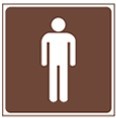 The prohibition of pets is to reduce disturbance to wildlife and habitat and make your viewing experience better. The presence of dogs, even when leashed, can scare wildlife away from the trail. It may be because wildlife instinctively look at dogs as predators. Fleeing from a predator burns much needed energy that animals need to live and raise their young. Service animals that are individually trained to perform tasks for people with disabilities are allowed as long as they are under the direct control of their owner at all times and all feces is removed from the site. Dogs and other pets brought to the refuge for a drive on the auto tour route must remain inside the vehicle while on the Refuge and should not be allowed to disturb or harass wildlife.
The prohibition of pets is to reduce disturbance to wildlife and habitat and make your viewing experience better. The presence of dogs, even when leashed, can scare wildlife away from the trail. It may be because wildlife instinctively look at dogs as predators. Fleeing from a predator burns much needed energy that animals need to live and raise their young. Service animals that are individually trained to perform tasks for people with disabilities are allowed as long as they are under the direct control of their owner at all times and all feces is removed from the site. Dogs and other pets brought to the refuge for a drive on the auto tour route must remain inside the vehicle while on the Refuge and should not be allowed to disturb or harass wildlife.
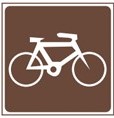 As a conservation agency we strongly encourage the use of alternate transportation that is healthier for our communities and environment. However, bicycles are not allowed on the refuge to limit disturbance to wildlife. This will drastically increase your ability to observe animals in their natural habitat.
As a conservation agency we strongly encourage the use of alternate transportation that is healthier for our communities and environment. However, bicycles are not allowed on the refuge to limit disturbance to wildlife. This will drastically increase your ability to observe animals in their natural habitat.
Horseback riding, ATV’s and other electric and gas powered vehicles are also prohibited unless needed for a disability. Refer to refuge signs and publications, or contact the refuge manager about current refuge regulations.
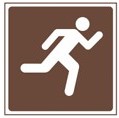 Sports such as jogging, Frisbee throwing, camping, and kite flying are not permitted because they are disturbing to wildlife and to other visitors. These should be done in parks that allow these activities. This will ensure the safety of wildlife as well as allow you and other visitors to enjoy wonderful sightings of birds and other animals using their natural habitat.
Sports such as jogging, Frisbee throwing, camping, and kite flying are not permitted because they are disturbing to wildlife and to other visitors. These should be done in parks that allow these activities. This will ensure the safety of wildlife as well as allow you and other visitors to enjoy wonderful sightings of birds and other animals using their natural habitat.
If you see animals or birds alerting or moving away from you in alarm, please stay still or move away, and please do not chase birds or purposely cause them to fly away, disruptions like these can cause lasting effects on birds and wildlife.
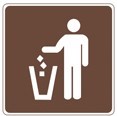 Everything at Ridgefield NWR is for the health and continued vitality of native animal and plant species. Collecting and removing archaeological or historic objects is prohibited, as well as removing any natural material such as plants, mushrooms, berries, and antler sheds. There are plenty of other public places that allow for people to collect materials from the natural environment. Please leave everything you observe and take away only memories.
Everything at Ridgefield NWR is for the health and continued vitality of native animal and plant species. Collecting and removing archaeological or historic objects is prohibited, as well as removing any natural material such as plants, mushrooms, berries, and antler sheds. There are plenty of other public places that allow for people to collect materials from the natural environment. Please leave everything you observe and take away only memories.
Note: When taking pictures, please restrict the use of a flash when photographing birds and wildlife.
Trash receptacles are not available on the refuge, please pack out whatever you bring in with you.
Releasing unwanted pets and ‘rescued’ animals onto the refuge is not allowed and is considered a health risk or threat to wildlife and their habitats. Please contact the refuge office if you need assistance with these matters.
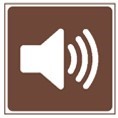 Playback devices used to elicit a response cause stress to birds and takes them away from the important task of raising young and protecting themselves. Some birders will use bird call technology in the field to verify a call they have heard. They may play the call quietly so only they are able to hear it or use headphones, which minimize any potential impact on birds in the wild. No laser pointers or pishing please.
Playback devices used to elicit a response cause stress to birds and takes them away from the important task of raising young and protecting themselves. Some birders will use bird call technology in the field to verify a call they have heard. They may play the call quietly so only they are able to hear it or use headphones, which minimize any potential impact on birds in the wild. No laser pointers or pishing please.
When birding, silence is golden. Birds and other wildlife have the ability to sense you long before you see them, to improve your chances and better your experience, we recommend moving quietly and cautiously along the trails.
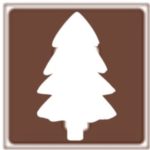 Please stay on paths and trails marked for refuge visitors. If an area is clearly marked as private property or off-limits, please respect the habitat and wildlife and stay in determined areas. Damaging habitat, even from walking off the path or moving branches can have a detrimental effect on birds and their safety. Do your best to leave habitat the same or better than when you found it.
Please stay on paths and trails marked for refuge visitors. If an area is clearly marked as private property or off-limits, please respect the habitat and wildlife and stay in determined areas. Damaging habitat, even from walking off the path or moving branches can have a detrimental effect on birds and their safety. Do your best to leave habitat the same or better than when you found it.
Disturbance can keep birds from their nests, leaving chicks hungry or enabling predators to take eggs or young.
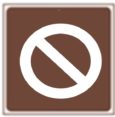 Follow all speed signs as posted on the refuge auto tour route, and follow signs directing where you are allowed on the refuge. Certain areas of the refuge are closed to protect sensitive species during part or all of the year. Observing these closures and other rules will ensure that the refuge continues to be a place that attracts wildlife while allowing visitors the chance to enjoy these natural areas. Migrating wildlife should not be kept from feeding or resting.
Follow all speed signs as posted on the refuge auto tour route, and follow signs directing where you are allowed on the refuge. Certain areas of the refuge are closed to protect sensitive species during part or all of the year. Observing these closures and other rules will ensure that the refuge continues to be a place that attracts wildlife while allowing visitors the chance to enjoy these natural areas. Migrating wildlife should not be kept from feeding or resting.
When driving around the River ‘S’ Unit Auto Tour, remember to stay in your car from Sept. 30th through April 30th, and move over for other vehicles, whether you are parked, or just want to move at a slower pace. Safety is important, and we want everyone to have fun!
When visiting the Cathapotle Plankhouse, whether it is open or not, we ask that you do not throw things onto the roof or at the building, try to climb the walls or roof, and generally do not harass the House. This is an important building to the Indigenous Peoples of our Region, as well as Refuge and Friends Staff and Volunteers, and we want to make sure that everyone who visits is able to learn something new, and maintains and respectful relationship with it.
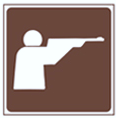 Waterfowl hunting is permitted on approximately 760 acres of spaced blind hunting area on Ridgefield NWR in accordance with State and Federal regulations and Refuge specific conditions. Regulated waterfowl hunting programs are compatible with our conservation efforts and the hunting community regularly contributes to our mission through volunteering and the money spent on permits and gear. We encourage you to learn more at https://www.fws.gov/birds/bird-enthusiasts/hunting.php
Waterfowl hunting is permitted on approximately 760 acres of spaced blind hunting area on Ridgefield NWR in accordance with State and Federal regulations and Refuge specific conditions. Regulated waterfowl hunting programs are compatible with our conservation efforts and the hunting community regularly contributes to our mission through volunteering and the money spent on permits and gear. We encourage you to learn more at https://www.fws.gov/birds/bird-enthusiasts/hunting.php
For a more detailed guide to ethical birding practices, please refer to the Mindful Birding Guidelines composed by www.MindfulBirding.org